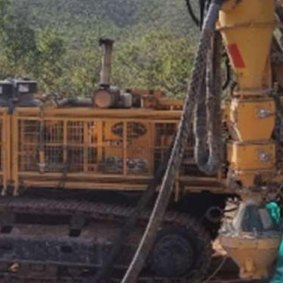
Among the company’s database of 5000 rock chips, fewer than 500 samples have been analysed for a full suite of rare earths, while only EV drill samples from its Boulder area have been analysed.
Management says it has been buoyed by the results of recent studies by the Queensland Department of Resources, the University of Queensland and James Cook University as part of the State’s New Economy Minerals Initiative. The studies highlight the company’s Khartoum project as sitting in the centre of a significant area several times the size of the project itself, containing mineralisation styles with the potential to host critical minerals listed by the Australian Government.
EV Resources executive director Adrian Paul said: “Our geological assessment of the Mossman Orogen, in which our Khartoum Project occurs, is endorsed by the New Economy Minerals Initiative study. EVR is in an excellent position to capitalise on the findings of the study. Prospective targets are being defined for Gallium, Germanium, and Rare Earth Elements, all critical minerals being sought by industry.”
The styles of mineralisation at Khartoum include volcanic-hosted massive sulphide deposits (VHMS), epithermal deposit potential throughout the entire project area and granite-related deposits hosted by big batholiths in both tenement areas. The company says it is planning a staged approach to exploring for gallium and germanium and is contemplating following up the original reconnaissance work with geochemical surface sampling, then collating geochemical results against geology, geophysics and mapping observations.
It says it might then employ a bit of wildcat drilling where appropriate to test initial geochemical, geological and geophysical targets as they present. The third-dimensional perspective will assist with coming to grips with the regolith, the near-surface oxidation environment and element migration patterns.
EV sees the fortunes of gallium metal and germanium semi-metal, which sit like twins side-by-side in the Periodic Table of the elements, as being strongly tied to current market forces related to the global electrification imperative and it expects to see exponential growth in their respective markets.
The demand for gallium is predicted to be six times its current production volume next year. The United States and European Union both list gallium as a critical resource, which means it is of immense economic importance, but of finite availability.
The current global gallium production capacity is said to be exhausted, but demand is surging, while the Fraunhofer Institute predicts demand is about six times higher than world production.
Germanium is among the rarest metals on Earth. While it is considered a semiconductor, its properties continue to amaze scientists.
Traditionally – and for a long time – germanium was the leading raw material in electronics. It is now indispensable in fibre optics and is a critical and fundamental component of modern technology.
In the territory of fibre optic cables, it is predicted that demand for germanium will increase eight-fold through the next six years, which will mean a serious price increase is due sooner rather than later.
It is early days for EV in this space, but it looks well-dressed and ready to go and already has the ground and the encouragement from analyses and other high-powered research to give it a good head-start in its new quest for some unique critical metals.
Is your ASX-listed company doing something interesting? Contact: [email protected]

EV Resources’ reverse-circulation drilling at its Khartoum tin-silver-tungsten project where it has now also identified rare earths.









 Add Category
Add Category